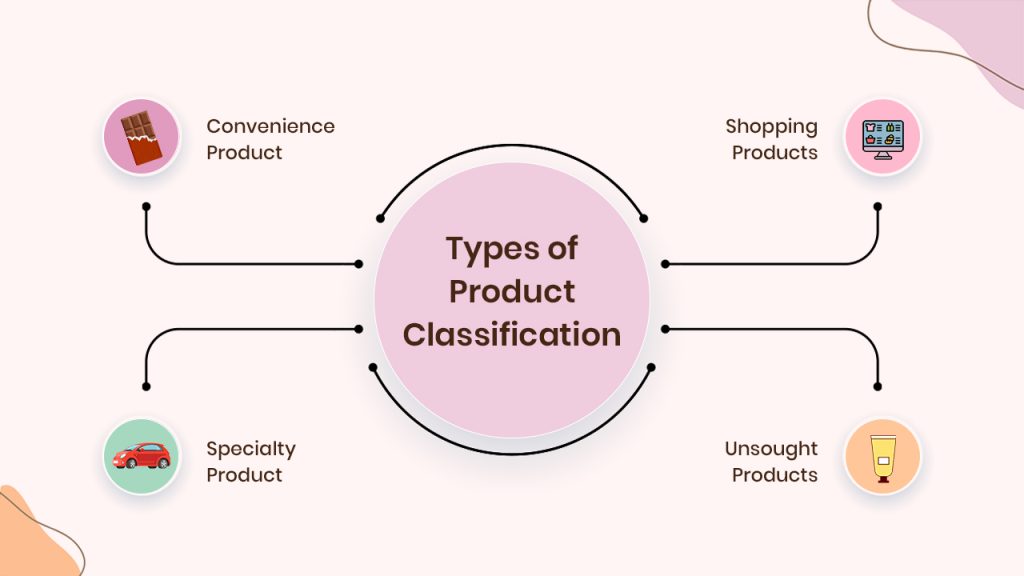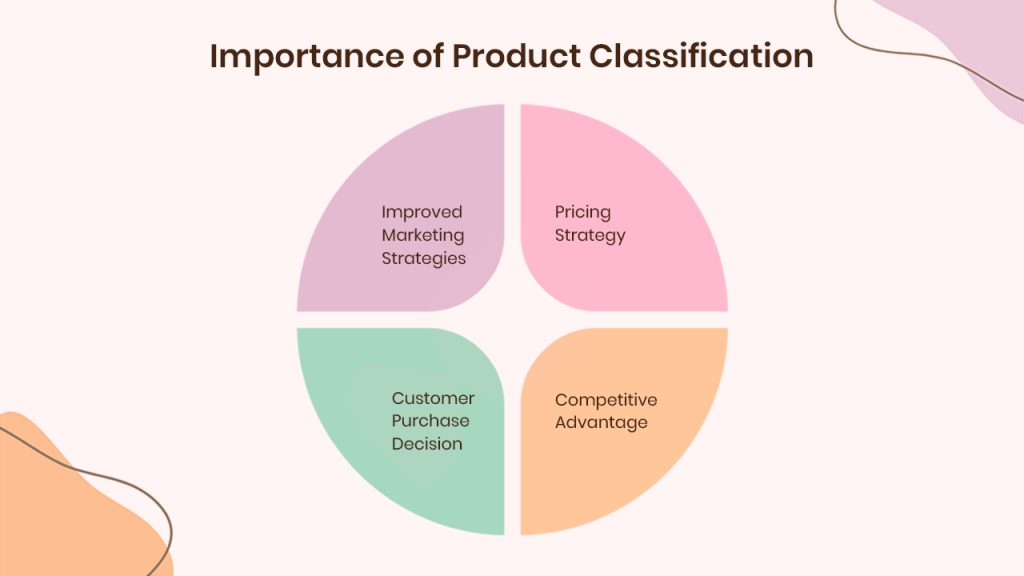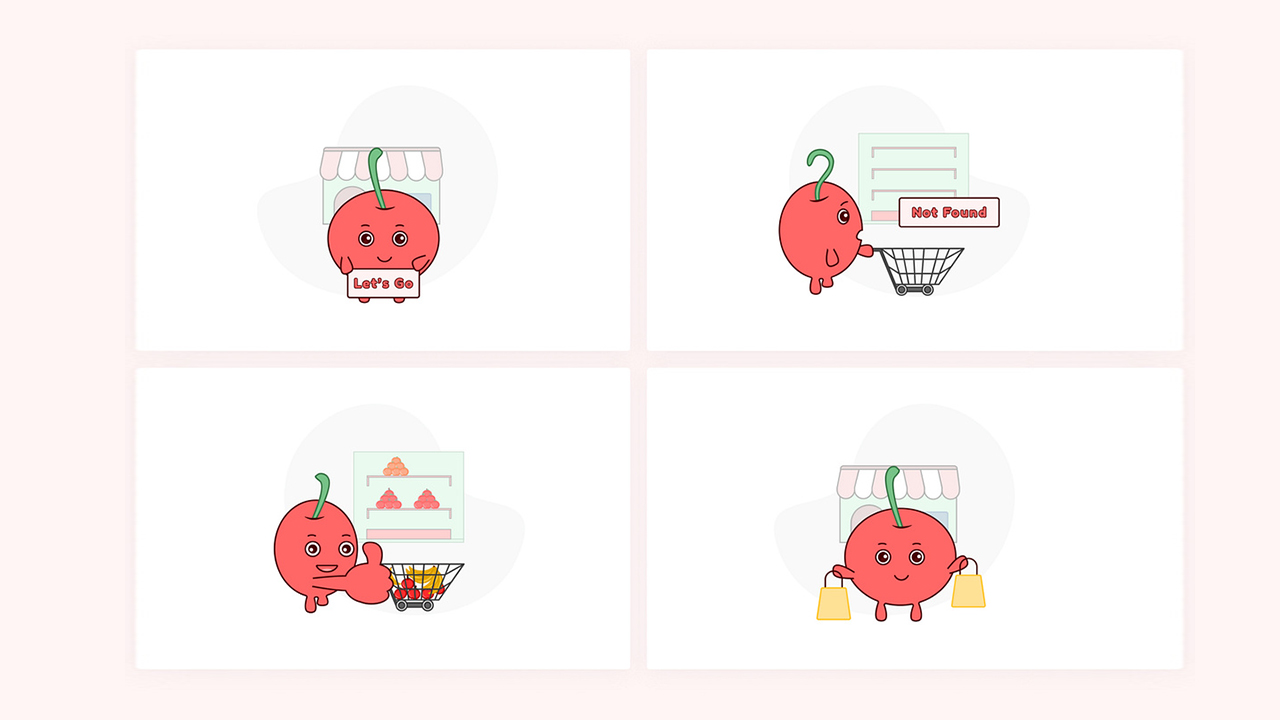You are standing in the checkout line and suddenly a shiny packet catches your eyes.
It’s right there, perfectly placed at your eye level, almost calling out for you.
Before you know it’s in your cart, even though you do not plan on buying it.
Ever wondered how that happens?
This isn’t just luck or chance- it’s the power of well-planned strategy – Product classification.
Product classification is not just a matter of sorting products into categories; it’s a strategic tool that influences everything from the customer shopping experience to the way business reach their target audience.
Product classification is essential as it resonates with their target audience, ensuring the right product is in front of the right people at the right time.
Continue reading further to understand the world of product classification, and the types of product classification to learn how businesses can strategically place their products in the market and why it is important to understand product classification.
Table of Contents
ToggleWhat is Product Classification?
Product classification in marketing means dividing the product into categories based on how and when customers buy.
Product classification is the process of categorising a product based on characteristics and consumer purchasing behaviour.
The categorisation is helpful for marketers as they can speak directly to their target audience.
Product classification also helps your business figure out what products are in demand, and which price point works best for customers. Classification also helps you understand customer behaviour and preferences and helps you create marketing strategies accordingly.
But don’t confuse product categories with product classification.
Product categories talk about industry and niches whereas, product classification talks about what people are actually buying the product.
Product classification is an important concept in marketing, it shapes how we formulate strategies and approach the target audience.
Product classification helps marketers market the Product. Knowing these classifications helps tailor the marketing focus and budget of the business, it can also help determine pricing and product demand and new invention of their product.

Types of Product Classification
1. Convenience Product
Consumer goods are everyday goods that consumers purchase frequently and do not put lots of thought or effort into shopping. The time and effort required to purchase convenience products are low.
The price of such goods is low and has a regular demand. Additionally, there is little to no difference between competing brands.
Usually, these kinds of products require heavy advertisement and sales promotion and don’t require any after-sales services.
Closely related to convenience products are consumers who are impulsive buyers, these customers can be used to boost sales and introduce customers to your brands.
The infamous example is Life Savers, originally manufactured by Life Savers Candy Company, formed in 1913. Its primary sales strategy was to encourage retailers and restaurants to display the candy next to their cash counters and always give customers a nickel back as part of their change amount to encourage them to purchase one additional item- a roll of Life Savers. Of course!
2. Shopping Products
In shopping for products, consumers devote considerable effort and time to selecting the brand. Consumers are firm believers that there are significant differences between brands and want to find the right one for the best price.
These kinds of products have high prices, which is why they are not purchased frequently.
The demand for the products is not regular as these are durable products. Additionally, these products require personal selling.
The name of your brand is important as consumers often care about brand names when deciding on shopping for goods.
For example: Consumers planning to buy smartphones, will spend hours researching the different brands, styles, prices, and reviews, before making any decision.
Note: Shopping for products can be as simple as toothpaste, for someone very interested in his/her dental health- perhaps after he/she reads online reviews or a dentist might have recommended her/him.
3. Specialty Product
Speciality products are highly differentiated products, and they are marketed under different brands.
These kinds of products have a special feature for which the consumer makes extra efforts while purchasing.
The speciality price products are very high, and the availability of these products is at few places. Additionally, these products are purchase purchased by a few people resulting in limited demand.
Products like expensive watches, antique paintings, luxury cars or bikes, and high-end skincare products are a few of the speciality products.
Marketing these types of goods requires building brand name recognition in the minds of consumers, especially for fashion brands the only difference may be the logo on the product. Even so, marketers spend a great deal of money efforts to try to get consumers to perceive these products differently than that of their competitors.
4. Unsought Products
Unsought products are not something customers are actively seeking but may need it when an opportunity or need arises.
Marketing these products is difficult, as the purchase of unsought products is usually driven by necessity, emergencies, or the realisation of a future need.
Examples of unsought products can be insurance and towing services. It is important to approach unsought products with a focus on creating strong awareness among consumers.

Importance of Product Classification
1. Improved Marketing Strategies
Product classification isn’t just about organising products, but it also helps determine why consumers purchase various products.
Businesses can craft marketing campaigns according to the needs of their audience. The importance of product classification in drafting is such that it helps marketers create tailored messages, help choose the best communication channel, and create campaigns leading to more effective and impactful marketing.
For example, if you sell high-end makeup products you should build quality and exclusivity and need to focus more on building a brand
Whereas, if you sell everyday products, then you make consumers aware of your existence and focus on practicality and value. Understanding product classification will help your business decide where and how you want to spend your marketing budget when advertising.
2. Pricing Strategy
Product classification plays an important role in the pricing of products. All product categories can be treated the same, but it often requires varied pricing strategies. Classification of products helps in determining whether the price of the product should be competitive or it should be considered a high-end luxury product with a premium pricing strategy.
For example, if it is a convenience or unsought product, it is considered a mass-market product which is a cheap and necessary product. A competitive pricing strategy might be used for such products to appeal to price-sensitive customers.
Conversely, if the product type is a speciality product, the high-end product they may adopt premium pricing, as they want to cultivate a sense
of product’s market being bit higher quality than the rest.
3. Competitive Advantage
As a business, if you have a thorough understanding of your product classification it will help your business differentiate itself from competitors, and improve its value proposition.
Knowing how your product is classified can also help you position yourself well in the market and differentiate from competing brands.
4. Customer Purchase Decision
Product classification influences the purchase decisions of consumers.
For example, if the customer is planning to buy a high-end product they will do thorough research and consider various factors before buying a product. Understanding the stages of customer purchase decisions throughout the different product categories will help businesses provide appropriate information and customer experience.
This is how critical product classification is for your marketing strategies. It can help you understand your customer’s needs and preferences, understand the suitable pricing structure and keep your business held high in a crowded market.
Visit website to get – Email Marketing Services
Conclusion
To wrap up, after you are aware of where your product fits, use consumer buyer behaviour to plan your next marketing move. Marketing strategies driven by product classification help you meet and exceed customer satisfaction and help you drive sales and revenue for your business.
If you feel this challenging our team at EnR can surely help you. Contact us today!
Read Also: How marketing automation works?
Alisha Limichana is a seasoned growth marketer and part of the MCG team at EnR Cloud, specializing in driving business growth through innovative strategies. She has a proven track record of delivering impactful marketing campaigns. Outside of work, Alisha enjoys exploring the mountains, travelling, and staying active and fit.





